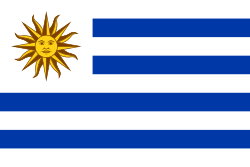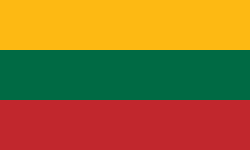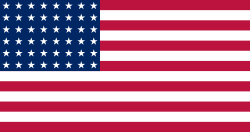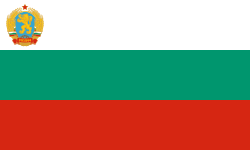Sovětská mužská basketbalová reprezentace
| Přehled medailí | ||
|---|---|---|
 Sovětská mužská basketbalová reprezentace | ||
| Mnichov 1972 | basketbal mužů | |
| Soul 1988 | basketbal mužů | |
| Helsinky 1952 | basketbal mužů | |
| Melbourne 1956 | basketbal mužů | |
| Řím 1960 | basketbal mužů | |
| Tokio 1964 | basketbal mužů | |
| Mexiko 1968 | basketbal mužů | |
| Montreal 1976 | basketbal mužů | |
| Moskva 1980 | basketbal mužů | |
| Mistrovství světa v basketbalu mužů | ||
| MS 1967 | basketbal mužů | |
| MS 1974 | basketbal mužů | |
| MS 1982 | basketbal mužů | |
| MS 1978 | basketbal mužů | |
| MS 1986 | basketbal mužů | |
| MS 1990 | basketbal mužů | |
| MS 1963 | basketbal mužů | |
| MS 1970 | basketbal mužů | |
| Mistrovství Evropy v basketbalu mužů | ||
| ME 1947 | basketbal mužů | |
| ME 1951 | basketbal mužů | |
| ME 1953 | basketbal mužů | |
| ME 1957 | basketbal mužů | |
| ME 1959 | basketbal mužů | |
| ME 1961 | basketbal mužů | |
| ME 1963 | basketbal mužů | |
| ME 1965 | basketbal mužů | |
| ME 1967 | basketbal mužů | |
| ME 1969 | basketbal mužů | |
| ME 1971 | basketbal mužů | |
| ME 1979 | basketbal mužů | |
| ME 1981 | basketbal mužů | |
| ME 1985 | basketbal mužů | |
| ME 1975 | basketbal mužů | |
| ME 1977 | basketbal mužů | |
| ME 1987 | basketbal mužů | |
| ME 1955 | basketbal mužů | |
| ME 1973 | basketbal mužů | |
| ME 1983 | basketbal mužů | |
| ME 1989 | basketbal mužů | |
Sovětská mužská basketbalová reprezentace reprezentuje SSSR v mezinárodních soutěžích v basketbalu.
Mistrovství světa
| Rok/pořádající země | Účast |
|---|---|
| MS 1950 | |
| MS 1954 | |
| MS 1959 | 6. místo |
| MS 1963 | |
| MS 1967 | |
| MS 1970 | |
| MS 1974 | |
| MS 1978 | |
| MS 1982 | |
| MS 1986 | |
| MS 1990 | |
| Celkem | Účast – 9× |
Mistrovství Evropy
Olympijské hry
| Rok/pořádající země | Účast |
|---|---|
| Berlín 1936 | |
| Londýn 1948 | |
| Helsinky 1952 | |
| Melbourne 1956 | |
| Řím 1960 | |
| Tokio 1964 | |
| Mexiko 1968 | |
| Mnichov 1972 | |
| Montreal 1976 | |
| Moskva 1980 | |
| Los Angeles 1984 | |
| Soul 1988 | |
| Barcelona 1992 | 4. místo jako SNS |
| Celkem | Účast – 10× |
Média použitá na této stránce
Olympic Rings without "rims" (gaps between the rings), As used, eg. in the logos of the 2008 and 2016 Olympics. The colour scheme applied here was specified in 2023 guidelines.
Olympic Rings without "rims" (gaps between the rings), As used, eg. in the logos of the 2008 and 2016 Olympics. The colour scheme applied here was specified in 2023 guidelines.
An icon that represents a gold medal
An icon that represents a silver medal
An icon that represents a bronze medal
Při zobrazení tohoto souboru lze snadno přidat orámování
Flag of the Socialist Federal Republic of Yugoslavia (1946-1992).
The design (blazon) is defined in Article 4 of the Constitution for the Republic of Yugoslavia (1946). [1]
Vlajka České republiky. Podoba státní vlajky České republiky je definována zákonem České národní rady č. 3/1993 Sb., o státních symbolech České republiky, přijatým 17. prosince 1992 a který nabyl účinnosti 1. ledna 1993, kdy rozdělením České a Slovenské Federativní republiky vznikla samostatná Česká republika. Vlajka je popsána v § 4 takto: „Státní vlajka České republiky se skládá z horního pruhu bílého a dolního pruhu červeného, mezi něž je vsunut žerďový modrý klín do poloviny délky vlajky. Poměr šířky k její délce je 2 : 3.“
flag of the Kingdom of Egypt (1922–1953) and the Republic of Egypt (1953–1958).
Finská vlajka
Autor: SanchoPanzaXXI, Licence: CC BY-SA 4.0
Flag of Spain during the Spanish State. It was adopted on 11 October 1945 with Reglamento de Banderas Insignias y Distintivos (Flags, Ensigns and Coats of Arms Bill)
This is the national flag of Belgium, according to the Official Guide to Belgian Protocol. It has a 13:15 aspect ratio, though it is rarely seen in this ratio.
Its colours are defined as Pantone black, Pantone yellow 115, and Pantone red 032; also given as CMYK 0,0,0,100; 0,8.5,79,0; and 0,94,87,0.US Flag with 48 stars. In use for 47 years from July 4, 1912, to July 3, 1959.
(c) I, Cmapm, CC BY-SA 3.0
The flag of the Soviet Union (1955-1991) using a darker shade of red.
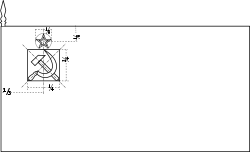
(c) I, Cmapm, CC BY-SA 3.0
The flag of the Soviet Union (1955-1991) using a darker shade of red.

Flag of the Socialist Federal Republic of Yugoslavia (1946-1992).
The design (blazon) is defined in Article 4 of the Constitution for the Republic of Yugoslavia (1946). [1]
Flag of Serbia and Montenegro, was adopted on 27 April 1992, as flag of Federal Republic of Yugoslavia (1992-2003).
Flag of Serbia and Montenegro, was adopted on 27 April 1992, as flag of Federal Republic of Yugoslavia (1992-2003).
Autor: Scroch, Licence: CC BY-SA 4.0
National Flag of the People's Republic of Bulgaria (1948-1968). Tha flag has got the coat-of-arms from 1948
cancel symbol dark red
flag of the Kingdom of Egypt (1922–1953) and the Republic of Egypt (1953–1958).





